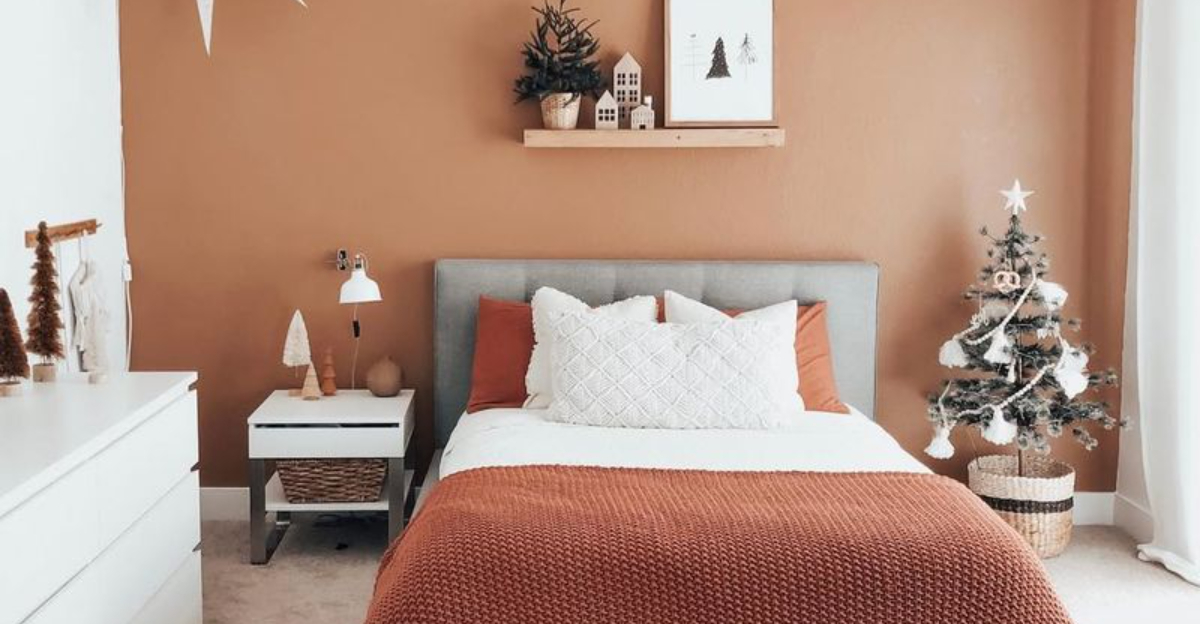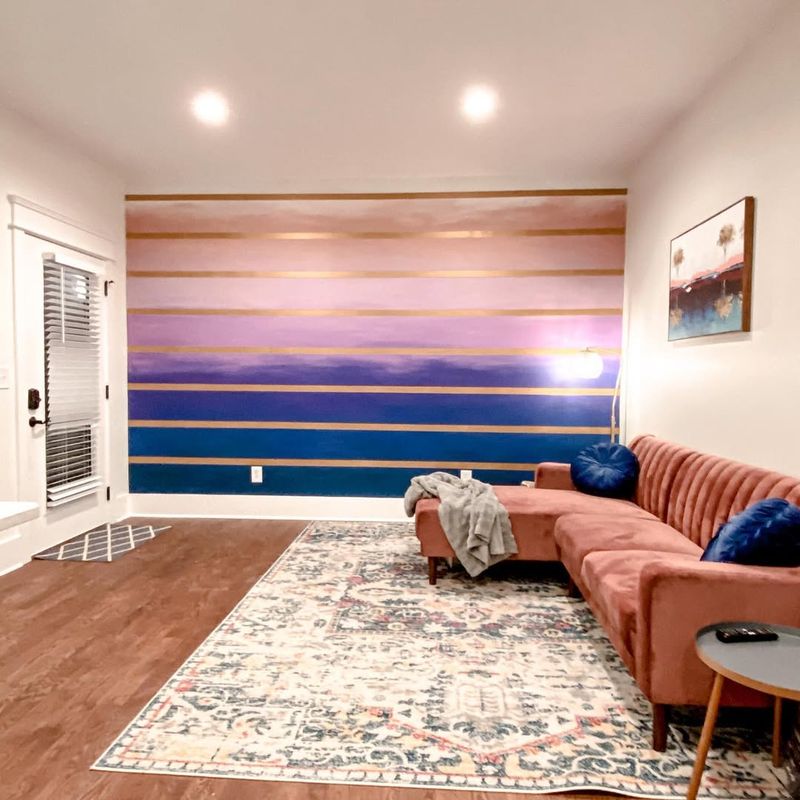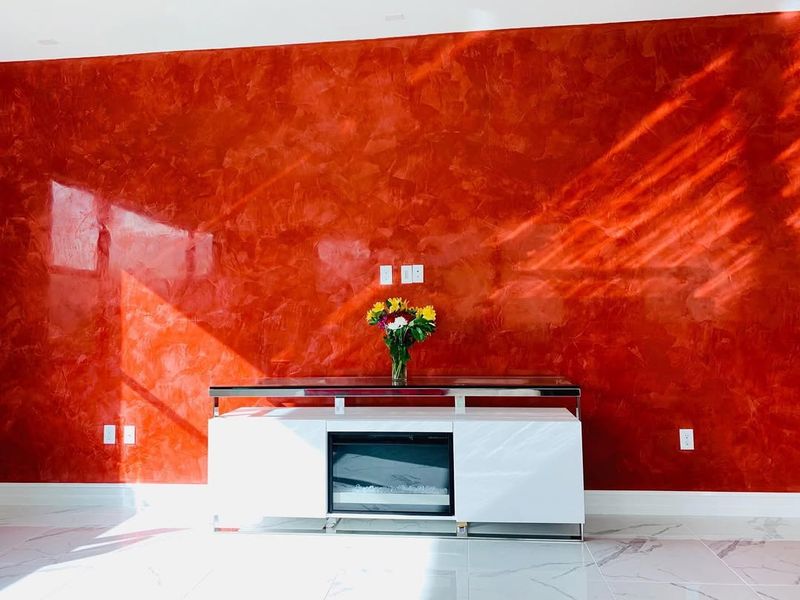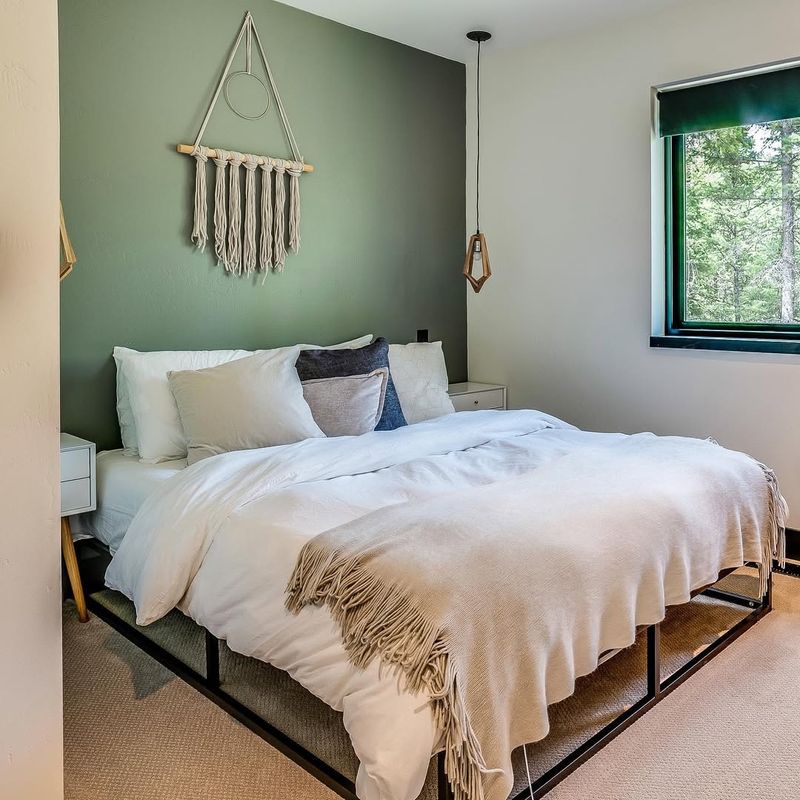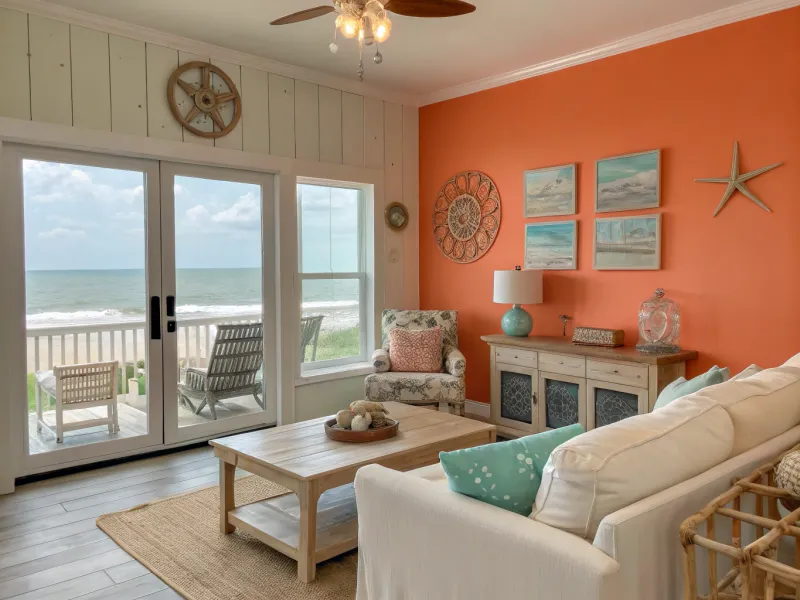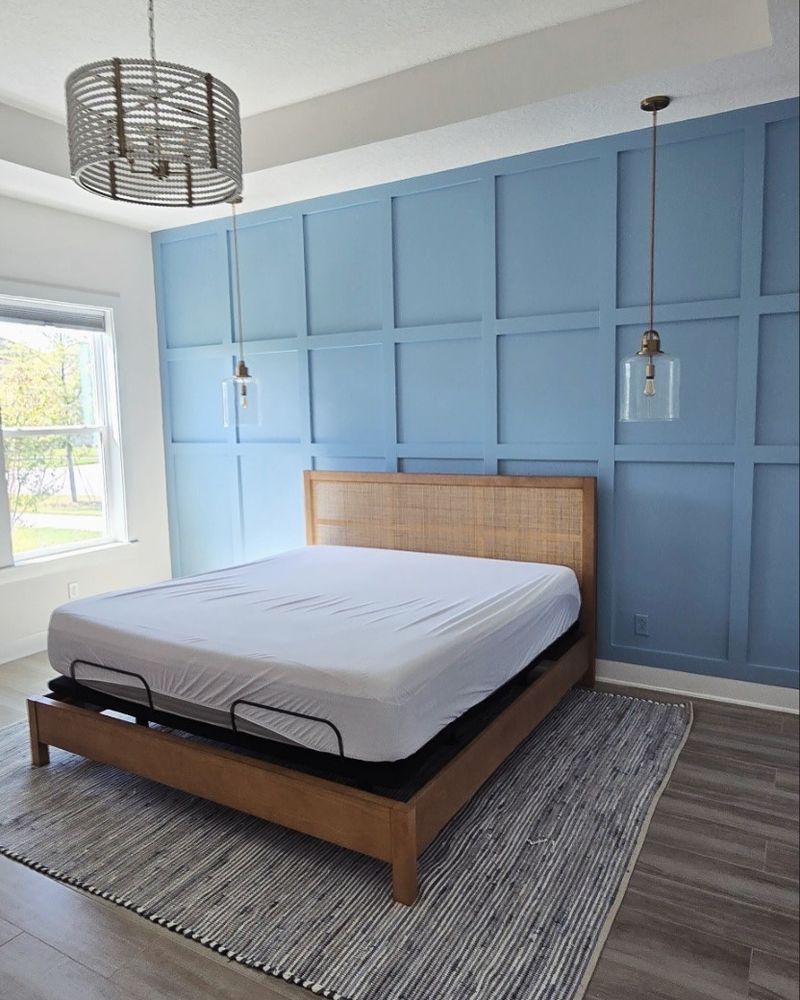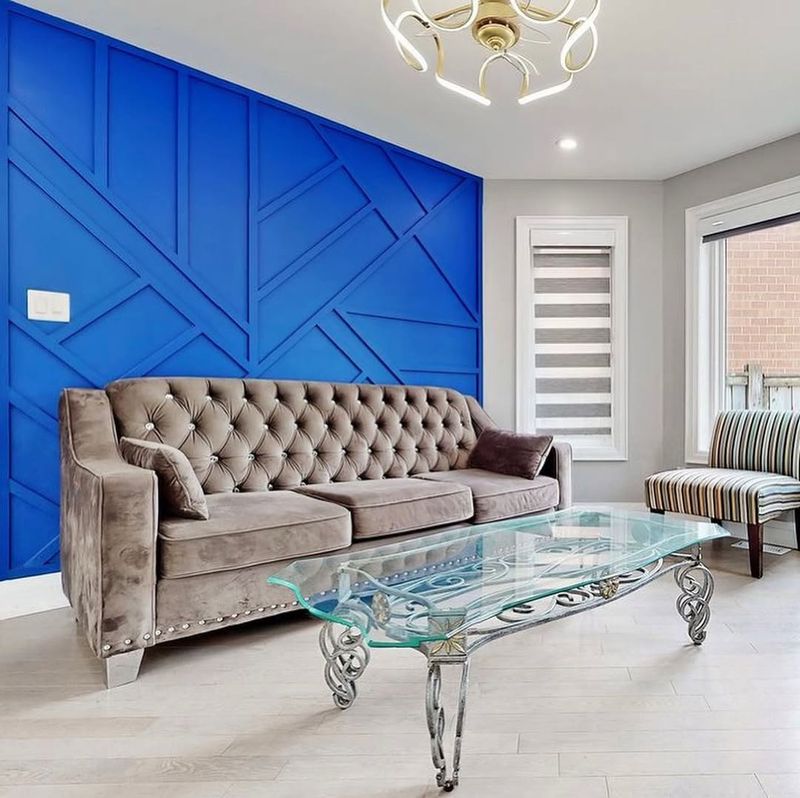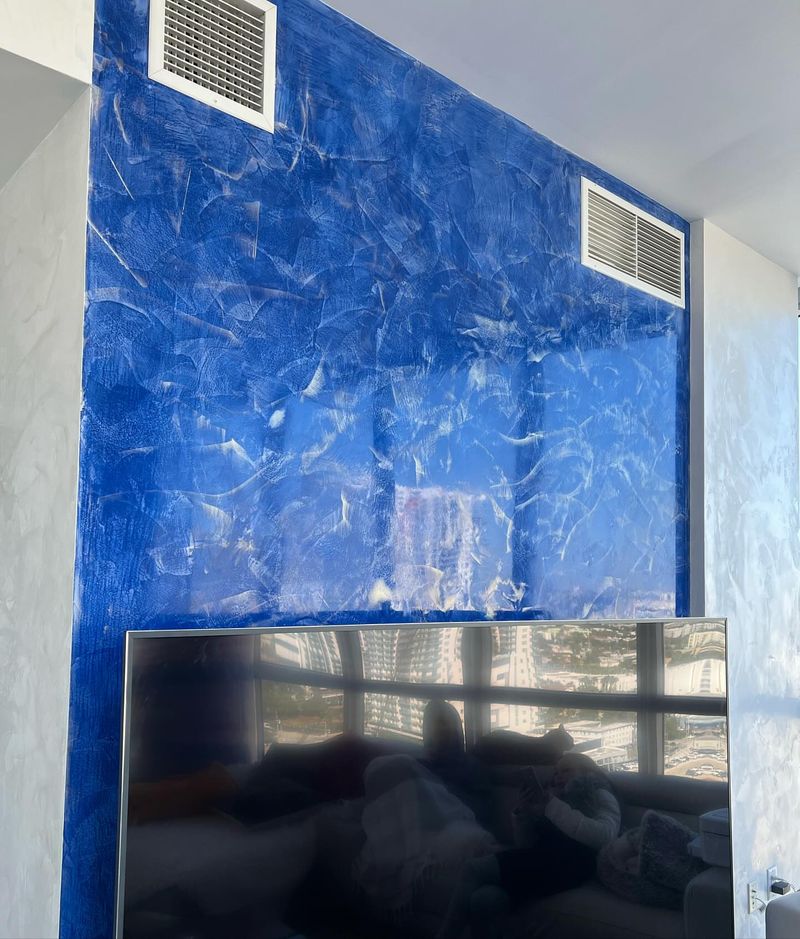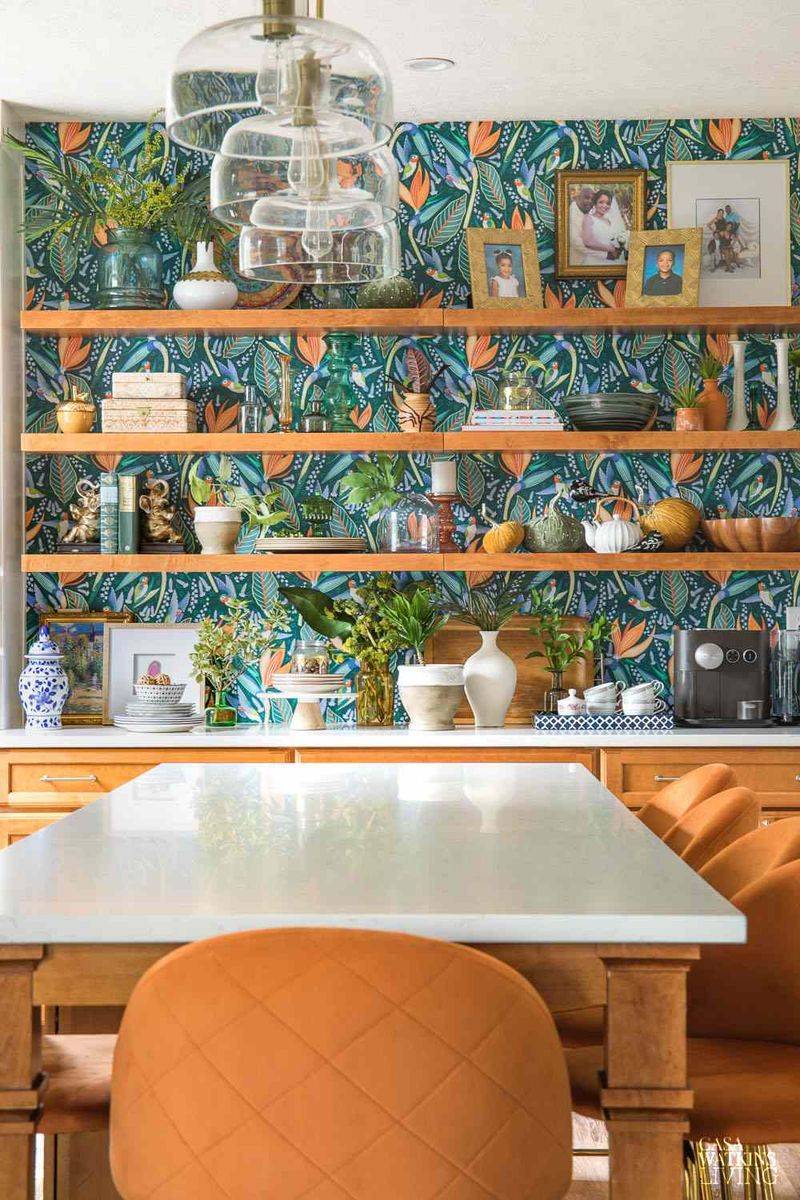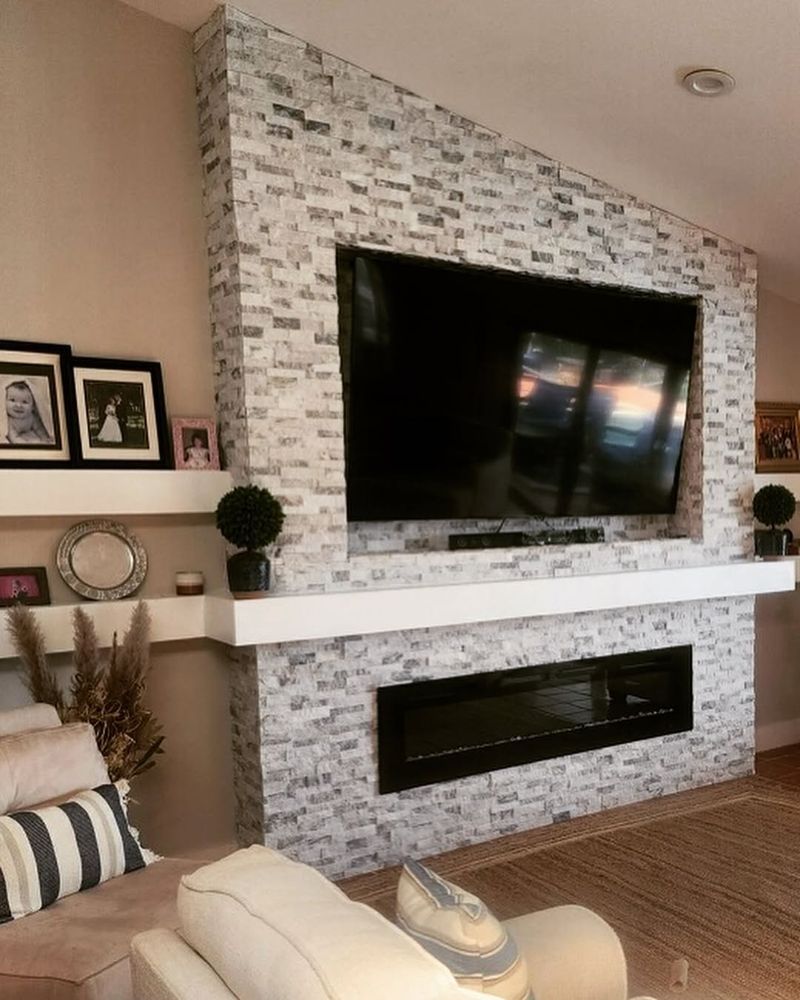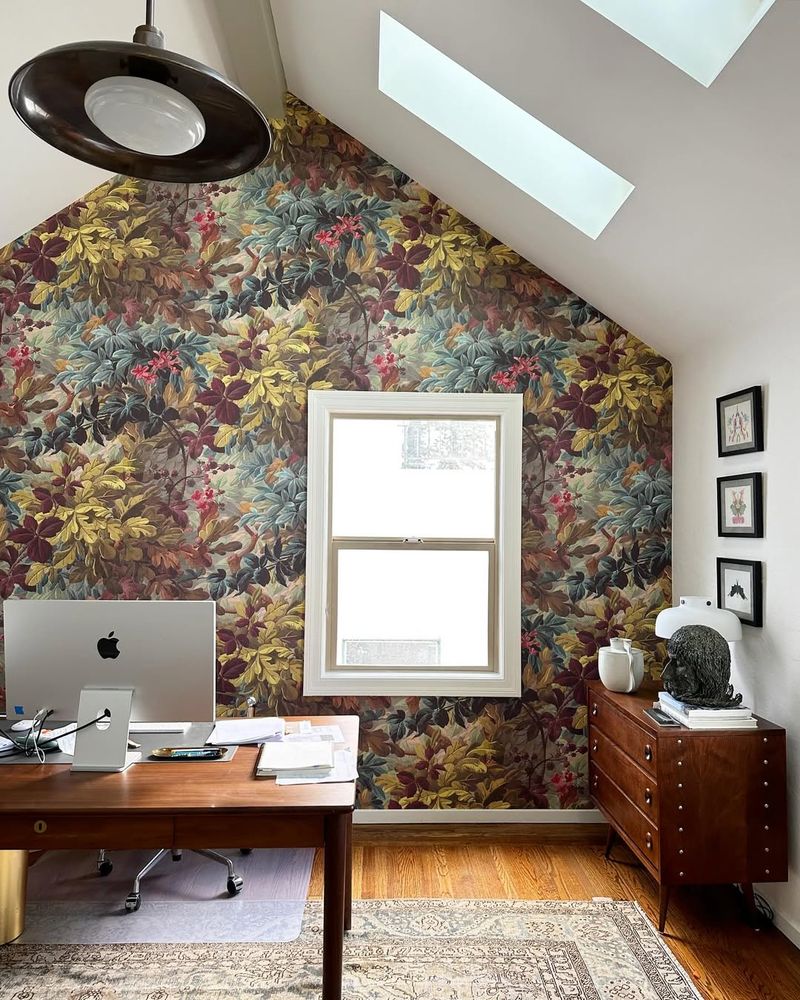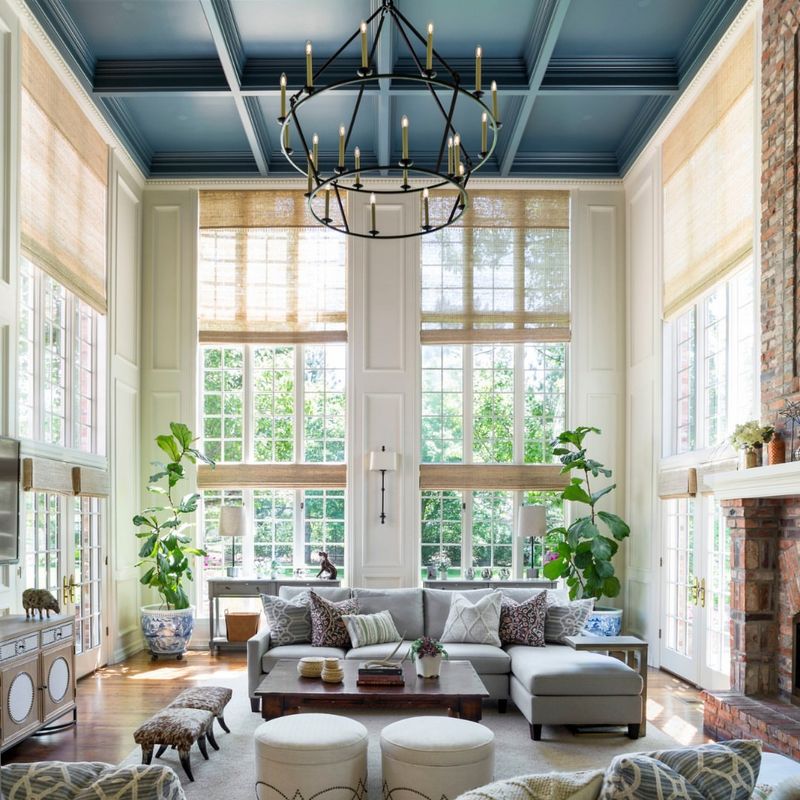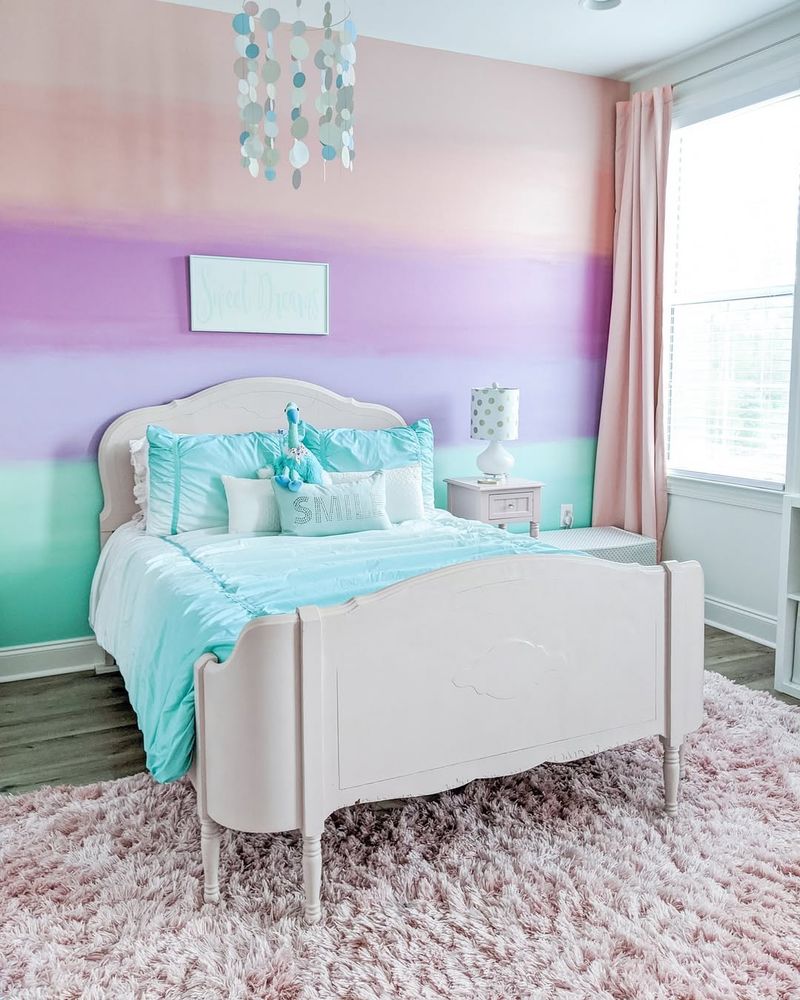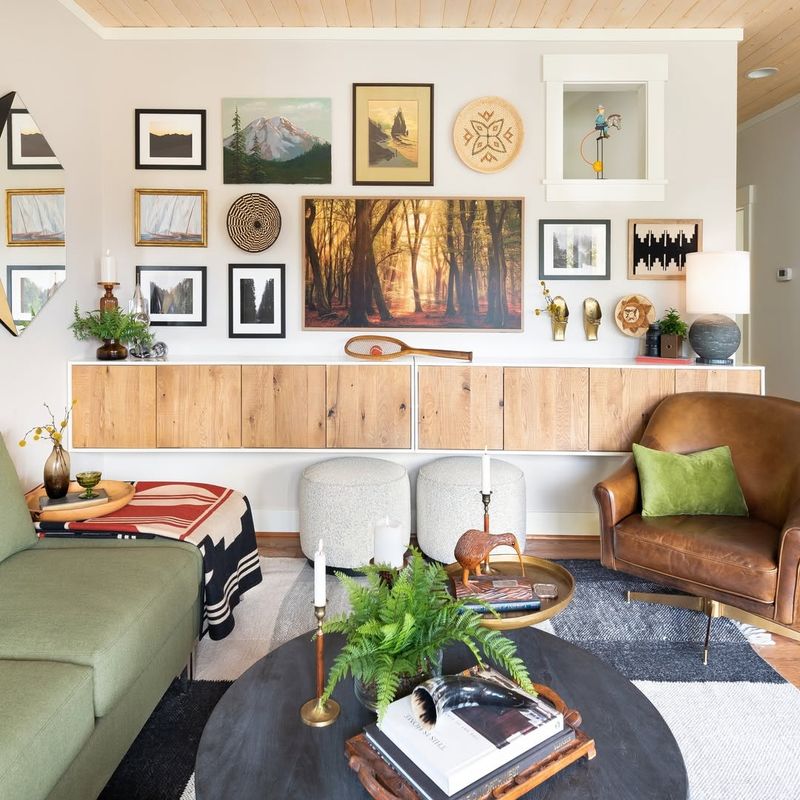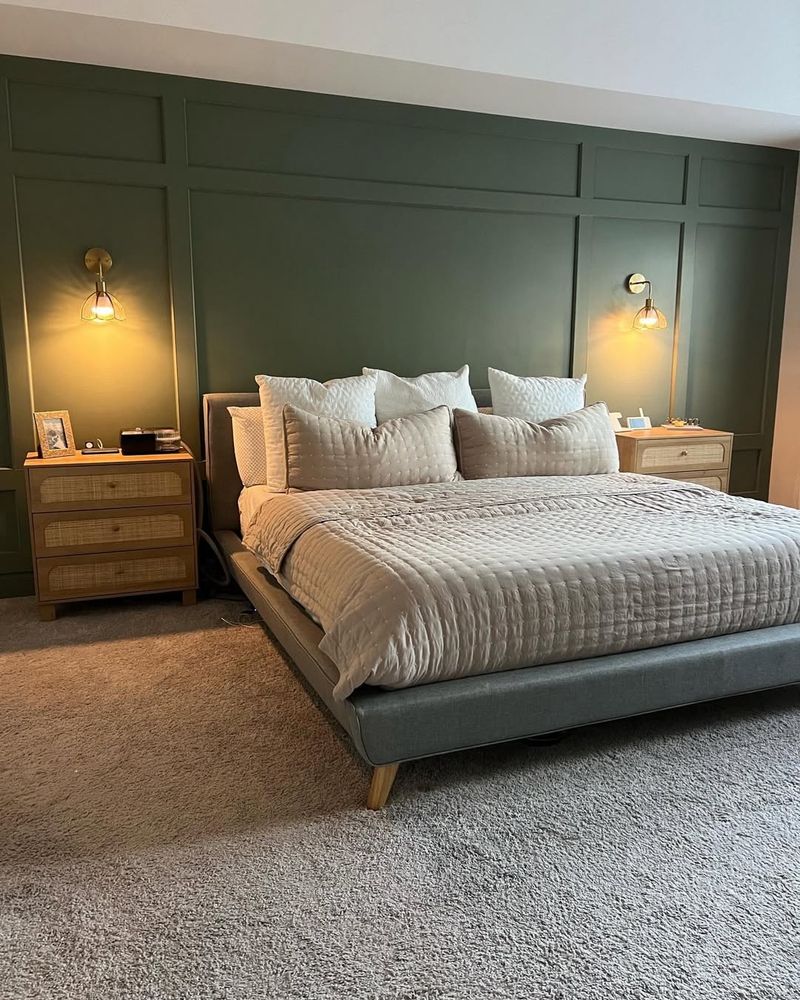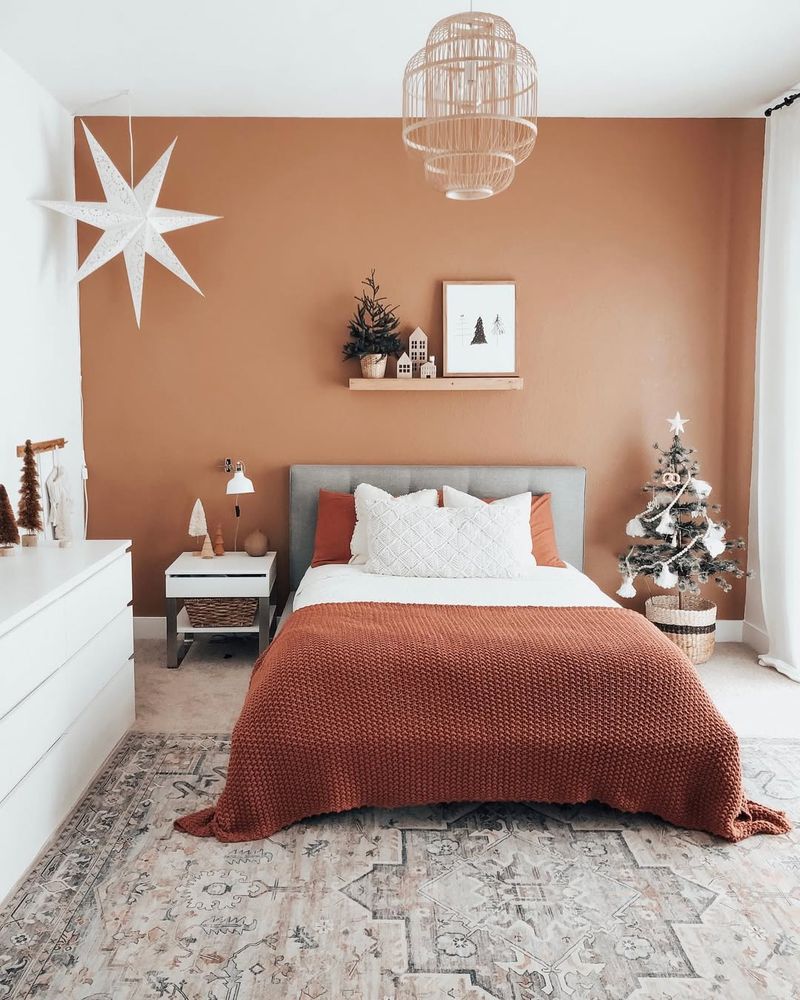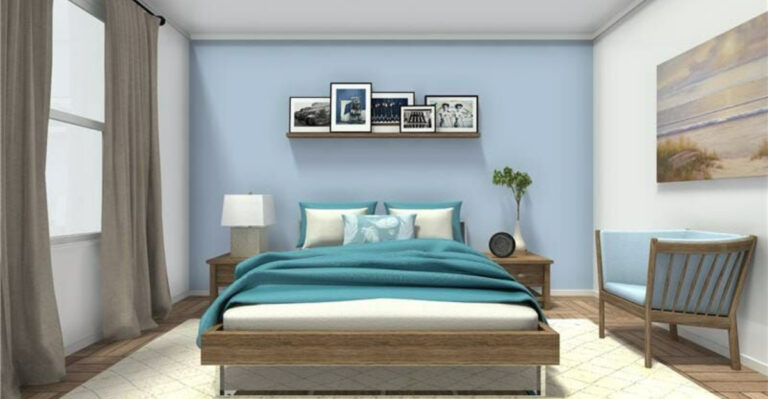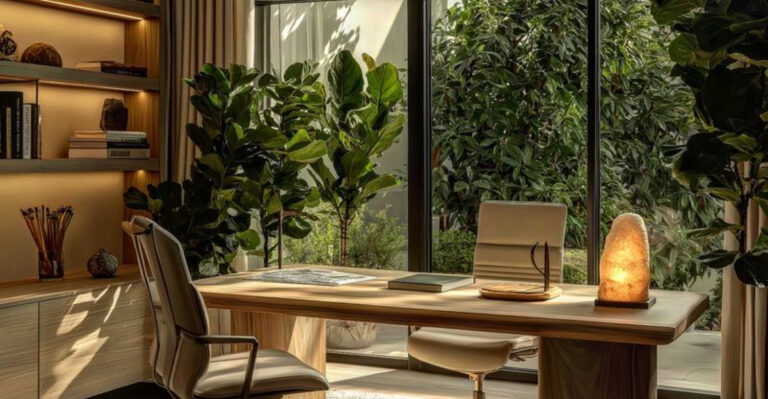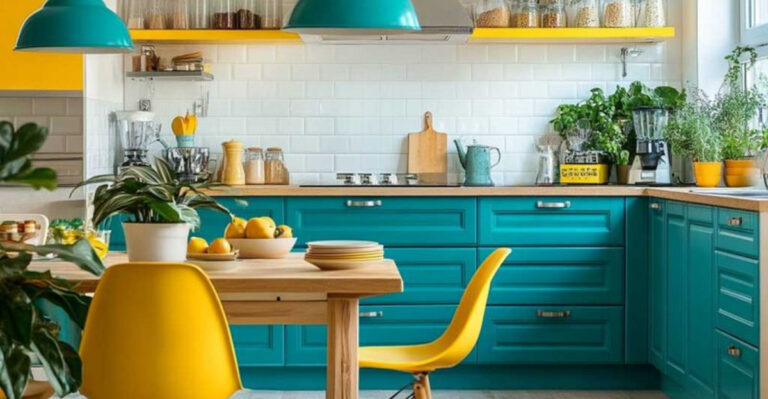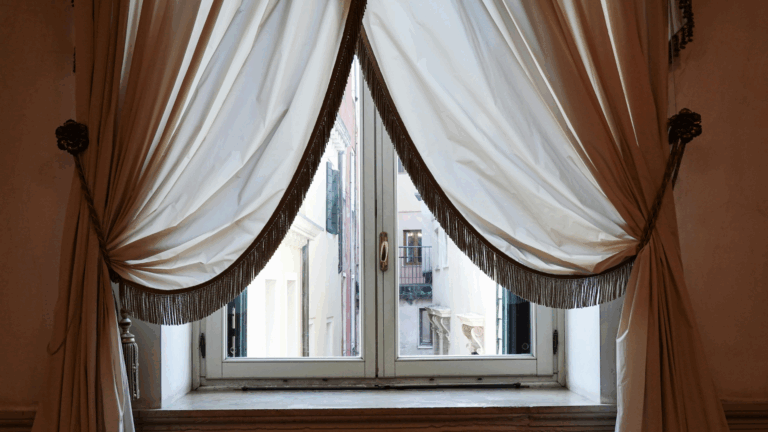8 Ways You’re Ruining Your Accent Wall (Plus 8 Tips On How To Work On Accent Walls The Right Way)
Accent walls can be bold, beautiful, and bursting with personality – but only when done right. Too often, what starts as a design statement ends up feeling disconnected, awkward, or just plain overwhelming.
Sometimes it’s the wrong color, the wrong wall, or a decor clash that throws everything off, your accent wall might be working against you. But don’t worry – I’m here to help you fix it.
From common missteps to expert-approved tips, here are 8 ways you might be ruining your accent wall – and 8 ways to make sure it becomes the stunning focal point it’s meant to be!
1. Choosing the Wrong Wall
Ever walked into a room and thought, “Why that wall?” That’s what happens when your accent wall is misplaced. It’s not enough to pick any wall and splash a color; placement is key. Designers advise selecting a wall that naturally draws the eye, like the one with a fireplace or a large window.
In a room where the walls are all equal, choose the wall you face when you enter. Ignoring this can lead to an awkward room flow, making it feel more chaotic than chic. Remember, location is everything in design!
2. Overwhelming with Too Much Color
A splash of color can turn heads, but a tidal wave might just send them spinning. Overloading your accent wall with intense hues can overpower the senses, making it hard to relax in your space.
When it comes to color, think of it as seasoning—too much can spoil the dish. The key is in moderation, allowing the accent wall to complement, not compete with, the rest of the decor.
3. Ignoring Texture Opportunities
Flat paint is fine, but ever considered adding some texture? Designers emphasize the impact of texture in creating depth and interest.
Whether it’s a textured wallpaper, wooden panels, or even fabric, these materials can transform your accent wall into a piece of art. Many overlook the tactile aspect, missing out on an opportunity to engage not just the eyes but the hands.
4. Mismatch with Room’s Theme
Imagine a tranquil beach house with an accent wall that screams nightclub. Not quite the vibe, right? A common mistake is choosing a color or pattern that clashes with the room’s existing style.
If your room has a coastal vibe, maybe skip the neon stripes. The goal is cohesion, creating a seamless flow that makes the entire space feel intentional and curated. It’s about complimenting the narrative of the room, not writing a new one.
5. Neglecting Lighting Effects
Lighting can make or break your accent wall’s impact. Inadequate lighting can leave your carefully chosen wall looking dull and washed out.
Designers stress the importance of illuminating your accent wall to enhance its features. Whether through natural light, strategically placed lamps, or even wall-mounted lights, the right illumination can bring out the colors and textures you’ve worked hard to perfect.
6. Forgetting About Furniture Placement
Picture this: a beautifully designed accent wall hidden behind a bulky piece of furniture. Tragic, isn’t it?
The wall should be visible and unobstructed, allowing it to serve as the room’s focal point. Arranging furniture away from the accent wall can make the space feel more open and inviting.
Remember, your furniture and wall should work together, not against each other. This synergy creates a balanced space where both elements shine.
7. Using the Wrong Paint Finish
Ah, the nuance of paint finishes! Many overlook the impact of choosing the wrong finish. A gloss finish might reflect too much light, while a matte finish can absorb it, altering the room’s ambiance.
The right finish can enhance the wall’s appeal, adding to its aesthetic charm. Don’t let a poor choice dull your design; a well-chosen paint finish can make your accent wall a masterpiece rather than a mistake.
8. Overdecorating the Accent Wall
When it comes to decorating your accent wall, less is often more. Many commit the error of overloading the wall with art, shelves, and knick-knacks, turning it into a cluttered mess.
A few well-chosen pieces can highlight the wall without overpowering it. The wall itself is the statement; too many adornments can distract from its beauty. Simplicity is key, letting your accent wall breathe and shine.
1. Go Bold, But Keep It Balanced
A good accent wall brings contrast, not chaos. It should pop, sure – but still feel connected to the rest of the room. Choose a color or material that complements your palette rather than fights with it.
If your room is mostly soft neutrals, try a deep jewel tone or earthy shade. If you’ve got vibrant furniture, consider something more muted.
It’s all about the right kind of drama – the kind that whispers confidence rather than yelling for attention.
2. Texture Can Say More Than Color
Who says paint is the only option? Wood slats, stone, exposed brick, or even plaster can turn a plain wall into a statement. Texture adds depth and character without needing bright colors.
A wood accent, for instance, can warm up a modern space or give rustic charm to a contemporary room. The trick is to let the texture do the talking while keeping the rest of the room clean and simple so that contrast shines through.
3. Wallpaper Isn’t What It Used to Be
Modern wallpaper can be subtle, edgy, romantic, or downright wild. Whether it’s a mural-style design or a soft repeating pattern, it’s one of the easiest ways to add personality without committing to a full room redo.
Just be sure the print doesn’t overpower the space – it should enhance, not dominate. Peel-and-stick options make experimenting low-stakes, so if you’re nervous about commitment, start with a temporary design and see how it feels in the light throughout the day.
4. Don’t Forget the Ceiling
Who says accent walls have to be vertical? Painting or wallpapering the ceiling can create a cozy, dramatic effect that turns a forgotten surface into something special. It works especially well in smaller rooms or those with interesting architectural details.
Pair a moody color up top with lighter walls to keep it grounded. It’s unexpected, stylish, and surprisingly effective when done with intention. The ceiling becomes the quiet showstopper that guests never see coming – but always remember.
5. Add Visual Interest With Paint Techniques
Beyond solid color, techniques like ombré, sponging, or lime wash can give your wall dimension. These add texture and movement, especially in rooms that feel a little flat.
Lime wash, for instance, gives a soft, lived-in patina that works beautifully in both modern and vintage spaces. It’s a clever way to do something different without going overboard, and it can completely shift the room’s energy.
6. Let the Art Do the Talking
Instead of bold paint or wallpaper, try turning one wall into a gallery space. A collection of art, photos, or even sculptural pieces can create an accent wall that’s rich with meaning and texture.
Keep frames cohesive for a polished look, or mix them up for a more eclectic vibe. This approach works especially well in dining rooms, hallways, and living areas.
It brings personality into the space while still offering flexibility – you can switch pieces out as your style evolves.
7. Lighting Can Make or Break It
An accent wall needs the right lighting to live up to its full potential. Wall sconces, picture lights, or even a well-placed floor lamp can highlight texture, color, or art in just the right way.
Shadows and glow play a huge role in how we perceive depth and mood. Without proper lighting, even the boldest wall can fall flat. Think of it like dressing a star for the stage – you want the spotlight to hit just right.
8. Match the Mood, Not Just the Room
A good accent wall supports how you want the space to feel. Moody navy or charcoal in a bedroom can make it feel cozy and calm. A soft green or muted terracotta in a kitchen can add energy without shouting.
It’s not just about making something “pop” – it’s about choosing a look that enhances the emotion of the space. When the color or material speaks to the room’s vibe, everything feels more cohesive and intentionally designed.

